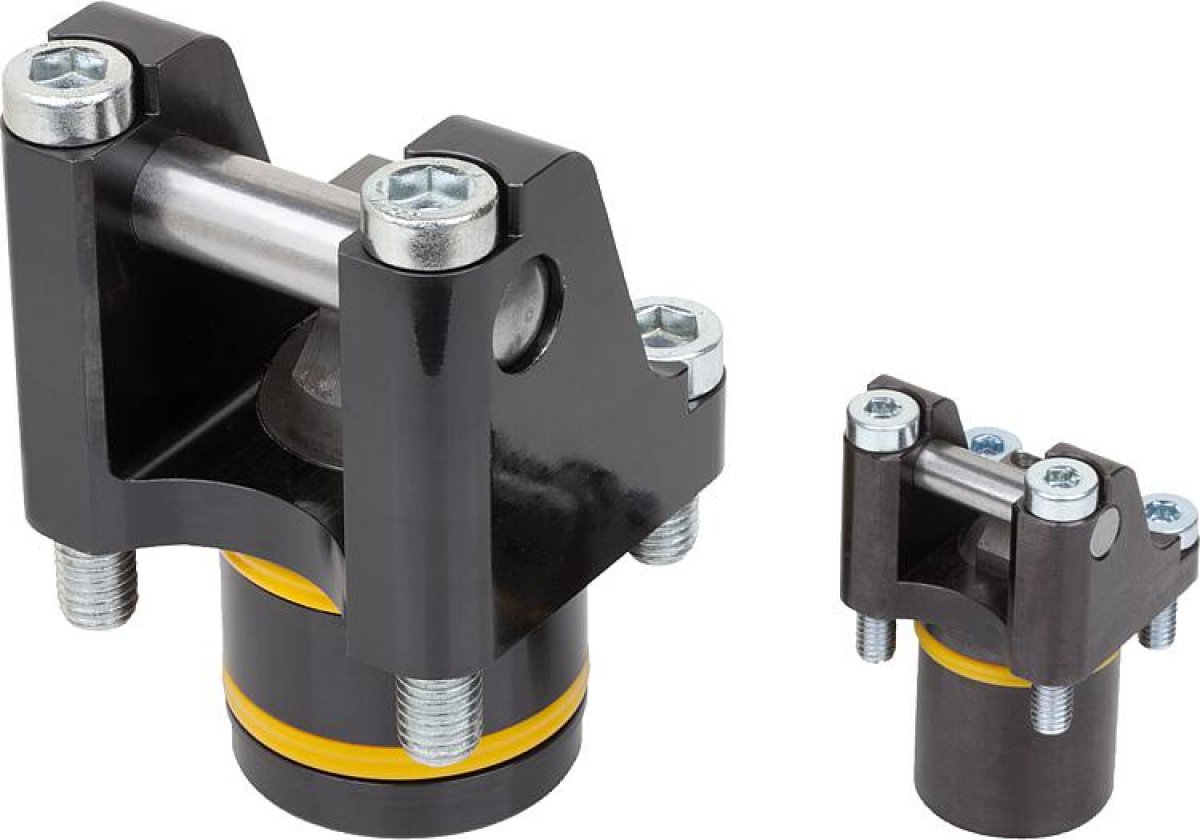Rotary lever clamps are highly suited for use in cramped conditions. Due to the compactness of the rotary lever clamps, they can be used in a variety of ways in clamping fixtures with little use of space and thus often enable flexible solutions.
In the rotary lever clamps, the clamping lever is connected to the piston rod. The clamping lever is released and opened by means of spring tension for single-acting rotary lever clamps and by means of a pressure medium for double-acting clamps. The oil supply for the rotary lever clamps is via drilled channels.
When clamping with the rotary lever clamp, the clamping lever moves towards the workpiece with a straight stroke and clamps it. To release the workpiece, the clamping lever retracts so far that the workpiece can be removed vertically. The single stroke of a rotary lever clamp depends on the clamping lever selection.
The clamping elements must be checked regularly for dirt and cleaned if necessary.
When selecting the installation position, it must be ensured that no swarf nests can form in the swivel area of the lever of the rotary lever clamp.
The flange surface of the rotary lever clamp should be adapted to the height of the workpiece during installation and a horizontal positioning of the clamping point should be available.
By positioning the rotary lever clamp correctly, workpiece tolerances can be optimally compensated for despite the short clamping lever.
Large forces can be generated with the rotary lever clamps. It must be ensured that the workpieces and clamping fixtures are designed for these loads.
Rotary lever clamps can be fitted with individual tension levers. The clamping force of a rotary lever clamp is dependent on the lever length.
The tension lever for the rotary lever clamp is not supplied.
Material:
Housing and piston steel.
Version:
Housing black oxidised.
Piston hardened.
Type of operation:
Drilled channels.
Technical data:
Max. operating pressure: 400 bar.
Assembly:
See mounting contour.
Advantages:
- No lateral forces during clamping.
- Low mounting dimensions.
- Wide selection of levers.
- Collision-free accessibility to the workpiece.
- Lineless pressure supply.
